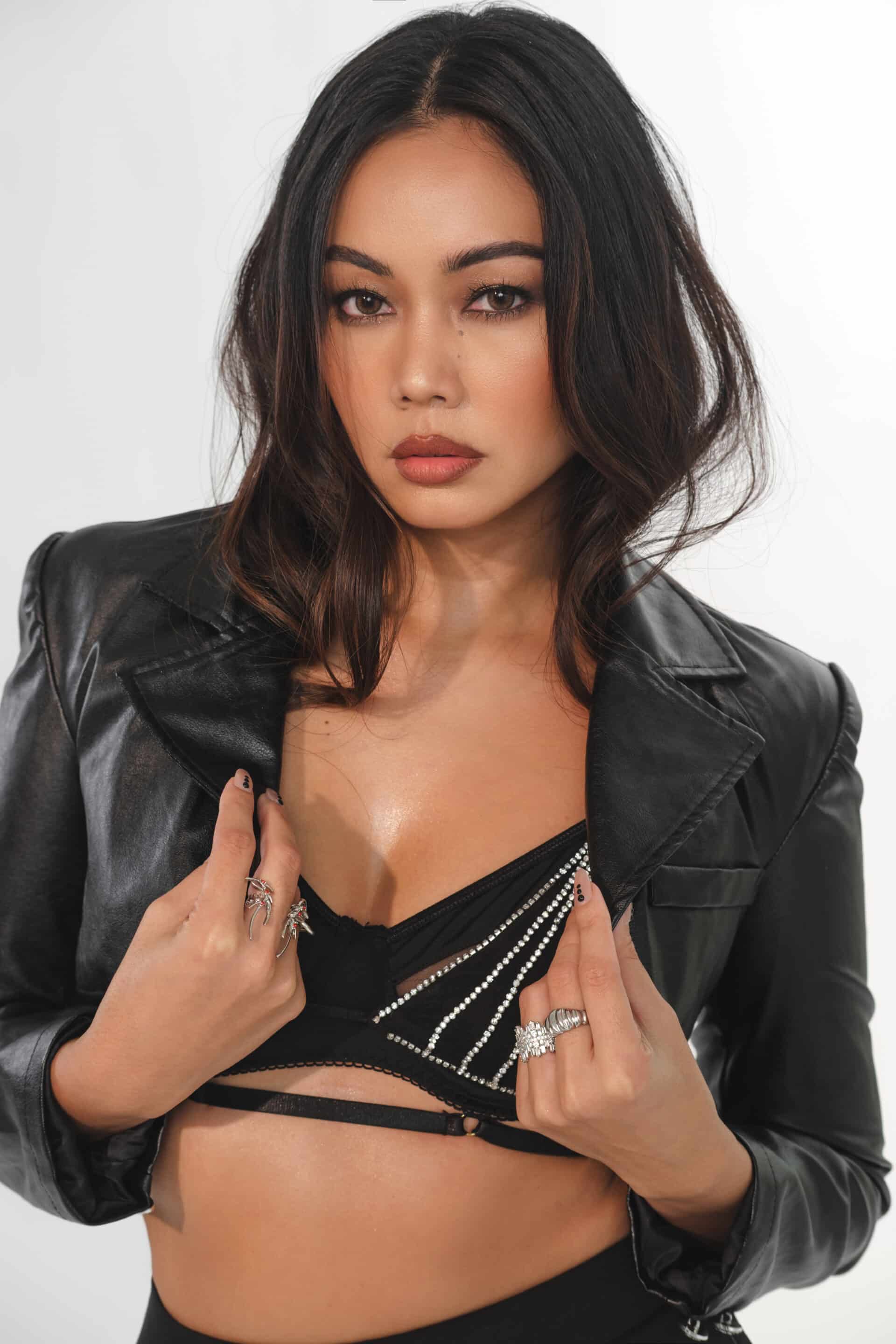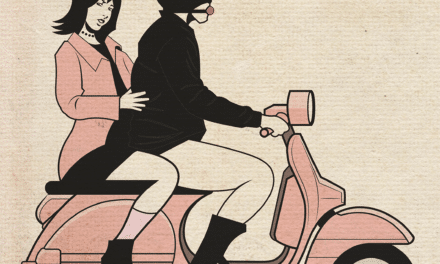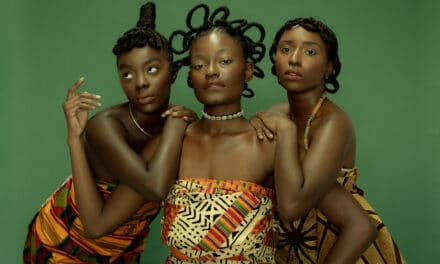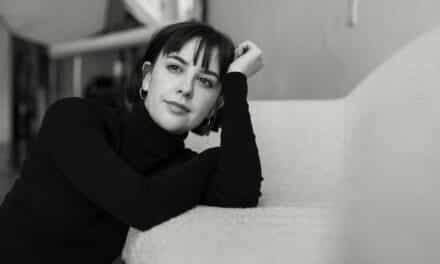Mica Javier is a Filipina singer, actress, and creative entrepreneur whose career spans music, film, television, and fashion across the U.S. and the Philippines. She began in New York City with roles in Gossip Girl and How To Make It In America, and later signed with Timbaland Productions. Her early music, including “3000 Light Years,” gained international attention with placements on Glee and Dance Moms via Sony-ATV’s Extreme Music.
In 2012, she returned to Manila, opened for Jennifer Lopez’s Dance Again World Tour, released her debut album Dreamer, and broke out with “Tonight” featuring Jay R. She won Best New Female Artist at the 2014 Aliw Awards for “Heart Song.” Mica transitioned into acting, appearing in hit TV dramas and films such as Los Bastardos, Init sa Magdamag, Siargao, and General Commander with Steven Seagal, where she also performed the official soundtrack.
She debuted in musical theater with Eto Na! Musikal nAPO and starred in Empty by Design, which closed the LA Asian Pacific Film Festival. Known for her blend of pop, R&B, and dance, Mica’s latest single “Majesty” with Grammy-winners Lil Eddie and Mike Mani earned placements on top editorial playlists including New Music Friday Philippines and OPM on the Rise.
Mica is also a lifestyle content creator and founder of Micandle, a line of artisanal soy candles currently undergoing a rebrand. As creative director at Homeworkz Entertainment / Jamaica LLC, she supports independent artists through content and branding.
Most recently, she starred in and co-executive produced Songs for Selina, a Filipino-led feature film on Amazon Prime US, tackling themes of abuse, LGBT+ identity, and industry corruption. Through it all, Mica continues to champion bold storytelling, creative empowerment, and global Filipina representation.
Socials
Instagram (239k) | TikTok (449k) | Facebook (238k) | YouTube (44.9k)
Songs for Selina is bold, emotional, and deeply personal. What real-life stories or experiences inspired the film—and why did you feel now was the time to tell them?
My husband, Jay R (widely known as the Philippines’ King of R&B), has had an incredible career spanning over 20 years. I have about a decade under my belt as well, not counting the years I spent modeling as a teenager. While we’ve both experienced incredible highs and career milestones, we’ve also faced our share of challenges–many of which we’ve seen our peers and friends go through in their own ways.
We’ve always been inspired by Hollywood films that marry cinematic integrity with layered, meaningful storytelling. That influence, combined with our lived experiences, inspired us to create something that sheds light on the darker side of the music industry in the Philippines–not just for entertainment, but to spark awareness and conversation, especially among the youth who might be dreaming of a career in this space.
This project is our creative way of telling the truth while celebrating the full spectrum of Filipino talent–on screen, behind the camera, and in the music. It’s always a good time to tell real stories, and this isn’t just something that happens in Hollywood. These experiences echo across industries worldwide.
You co-produced and co-developed the film while also starring in it and performing the soundtrack. What was it like wearing so many creative hats, and how did that shape the final story?
At the inception of this film, I was strictly there to tell a story and co-produce. Casting decisions were entirely in the hands of our director/screenwriter and co-producers—it was up to them to decide if there was a character that fit me. As it turned out, they saw me as Selina, the title character, and I was honored to step into a role unlike anything I’d played before. Once the story was locked and casting was complete, I had to take off my producer hat and fully immerse myself in the work of an actor. Thankfully, we had assembled a strong, trusted team that could execute the production to the level of quality we envisioned, which made switching roles easy. Then came post-production–an entirely different challenge.
The process was heavily impacted by COVID, which pushed me to step deeper into the producer role. I took on that responsibility with heart and determination, committed to seeing the film through every stage, from post to distribution. It felt like a crash course in film production, and I came out of it with a stronger skill set and a whole new level of creative and professional growth.
The film tackles themes like abuse, LGBTQ+ identity, and industry corruption. How did you approach these heavy subjects in a way that felt authentic and empowering?
I’ve had my own share of experiences in the industry. Some firsthand, others witnessed through friends and peers, and many more heard through the grapevine. As someone deeply immersed in the world of acting, television, music and modeling, stepping into my character’s shoes wasn’t a stretch. I’ve lived and breathed this career, with all the highs and lows that come with it, so the emotions were close, raw, and real. There was a lot to draw from.
We were also intentional about casting real members of the LGBTQ+ community in roles written specifically for them. Our lead, Rachel Coates, an amazing theatre actress and singer, brought not just talent, but their lived experiences to set, resulting in performances that were layered, honest, and deeply authentic.

You’ve worked across continents—from New York with Timbaland Productions to Manila’s music and TV scene. How have those global experiences shaped your voice as an artist and storyteller?
Every experience teaches me something new. I think of it as collecting pockets of memories–each one shaping how I approach the next thing. What I’ve come to realize is that it’s the authentic human experience that truly resonates, no matter the continent, color, or creed. Leaning into that truth, drawing from my own life, and giving myself permission to express freely has been both a challenge and a joy. I create songs that are empowering, take on roles that hold meaning or allow me to grow in new ways. I always discover something new about myself every time I take on a new creative challenge. I’m still learning, still evolving, but I’m proud of where I am today and excited for what’s ahead.
What does it mean to you, personally and professionally, to be a Filipina artist making her U.S. media debut with a story that’s unapologetically Filipino?
I’m proud, and I’m incredibly grateful for the opportunity to even do this. Coming from a family that values excellence, I carry not only my last name but also the legacy of my parents’ hard work and sacrifices. They gave me the best opportunities and I hold myself to a high standard because of that. Every step and every chance to push the needle forward is a win and being able to showcase what a Filipino, born and raised, can bring to the global stage is incredibly empowering. I’m inspired to keep pushing as I know there is a lane and a space for us to keep telling our stories and sharing our craft with the world.
How did your collaboration with Jay R influence the musical direction of Songs for Selina? Were there any creative clashes or unexpected breakthroughs during production?
I give full credit for the musical direction of Songs for Selina to Jay R, who produced and wrote all but one of the songs in the film. I helped co-write a few tracks, but he really did the heavy lifting. Our director, Dean Rosen, gave clear direction for what each song needed to express to move the story forward—but Jay R took it to another level. It was actually really fun writing for a third-party project, instead of our usual work on our personal catalogue. Collaborating on music has always been part of our rhythm as a couple—it’s been a core part of our bond since the day we met.
You’ve described music as your most personal form of expression. Which song on the Songs for Selina soundtrack hits closest to home for you—and why?
Aside from the film’s main theme song, which still makes me cry every time, I have a personal connection to the track “Me, Myself, and I.” I actually started writing it while playing piano one day, long before this film was even an idea. I never finished it back then, but I always loved the melody. The song’s about getting kicked out, abandoned, and having to survive on your own, solo, telling yourself you’ll find your way. That narrative hits close to home for me, which is why it’s one of my favorite songs on the soundtrack.

The film features an all-Filipino cast and was shot entirely in the Philippines. Why was that important to you, and what do you hope international audiences take away from that choice?
At the time of filming, we were still living in the Philippines full-time—so creating from there wasn’t just a choice, it was our only option. Moving to LA in the middle of the pandemic was definitely not on our 2021 bingo card. Looking back, the direction this film took in post-production feels completely divinely guided. From day one, we knew we wanted to create a film that could stand alongside international titles. We just didn’t know how it would all come together—or that we’d end up finishing and selling it internationally. That was always the dream,
but never a clear path. In many ways, we manifested it.Now, we just hope international audiences look beyond the cast and setting and see the heart of the story. We hope they connect with the message—because it’s a universal one. This kind of story happens everywhere. And if we can reach people across borders through film and music, then we’re doing something right.
You’ve entered a new chapter focused on creative ownership and fearless storytelling. What barriers have you had to break to get here—and what’s been most rewarding about that evolution?
The biggest barrier is always budget. In this economy, everything costs so much, even when you’re working with a skeletal setup. We’ve had to take risks, but also be really smart about how we use our funds. The second biggest challenge is finding people who will actually say yes to your story and take action with you. I’ve honestly turned into a professional nagger, because one thing that stays consistent no matter where you are in the world is this: you have to follow up. No one will ever care about your project as much as you do.
We’ve faced a lot of rejection, and it’s been a long, challenging road to get this film across the finish line. But I’ve learned that when a door closes, there’s almost always a window (or even a fire escape) wide open for you to climb through. I see rejection as redirection, and the way this film came together is living proof of that. A great piece of content or art will always find its home. What’s been most rewarding are the little breakthroughs we’ve had along the way—the relationships we’ve built, the good people we’ve met, and the fact that our little Filipino project was first embraced and picked up by an international company. That means everything.
As you build your U.S. presence, what kinds of stories do you hope to tell next—and how are you working to create space for more underrepresented voices in film and music?
I want to keep telling stories that inspire and carry meaning. Stories that people can take something from, that spark thought, reflection, or even just to spark joy. I also love weaving in bits of my culture, and the values and morals we grew up with. I personally gravitate toward action and thrillers, but drama with a touch of comedic timing will always have my heart.
Musically, I’m a pop girl through and through. I love creating edgy pop songs and the visuals that come with them—it’s my lane, and I feel like every track just keeps getting better. By continuing to create and carve out my own path, I know I’m also helping make space for others like me to break through and tell their stories too.





